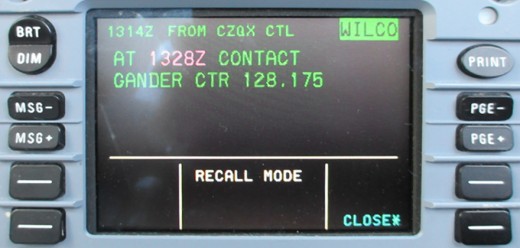
Nav Canada says it hopes to expand use of pilot/controller data link communications as the advantages of the system are becoming evident.
“This type of communication, this type of automation is certainly recognized within the industry as the way of the future,” Rob Thurgur, VP of operations for Nav Canada, told Metro News.
The system is only used for aircraft flying above 29,000 and is only used for routine altitude, heading and routing exchanges between pilots and controllers. Nav Canada is now looking at expanding the service to aircraft operating below RVSM airspace.
Thurgur said texting reduces the chances of miscommunication between pilots and controllers, particularly when dealing with pilots from other countries who might speak with accents or have trouble interpreting the nuances of the language as it’s spoken in North America.
Texting also reduces the volume of radio traffic and keeps the frequencies clear in case they’re needed for an emergency.
Thurgur said controllers and pilots are adapting to the system but it’s new employees on both end of the keypad who are really embracing the idea. “You look at new controllers that are coming into the industry today. They’ve grown up text messaging and talking via this type of technology so it’s almost second nature for them.”
The system is used almost exclusively by airlines at the moment and GA will likely depend on voice communications for the foreseeable future because of the cost of equipage.
